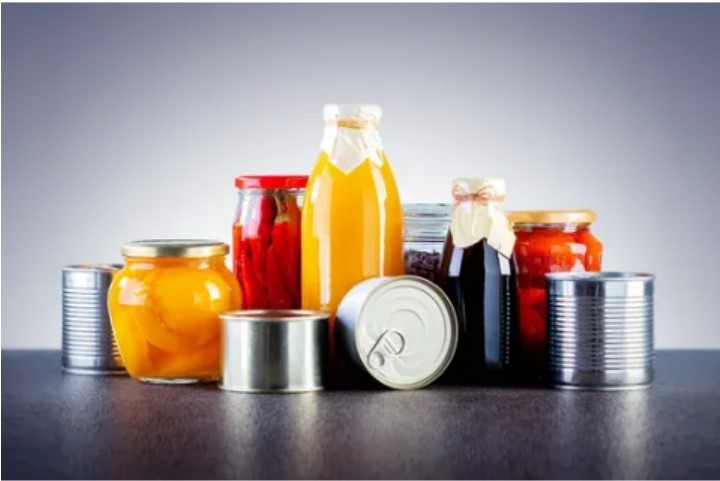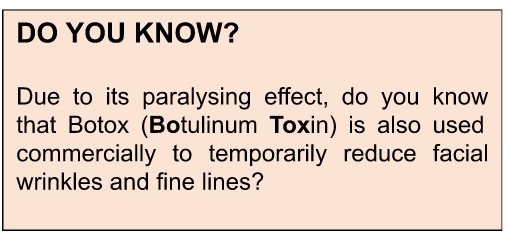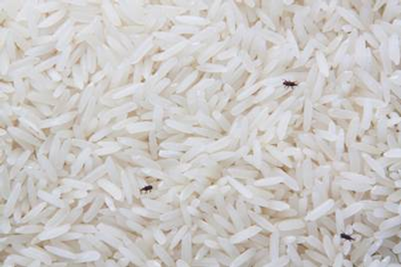Here’s why you SHOULD worry about the toxic bug in canned food

Photo credits: https://stock.adobe.com/
It was in the 1790s when French confectioner Nicolas Appert discovered that heating up food in sealed glass bottles preserved food from deterioration. Preservation of food takes up considerable time and energy, but in those days before technology blessed us with proper storage equipment, it was one way not to starve during winter. While we do not experience winter in Singapore, home canning is increasingly popular to reduce food waste and preserve food to extend their shelf life. It is safe, effective, inexpensive, and relatively simple. Almost anything can be canned now - fruits, vegetables, and sauces.
Canning involves first filling a tin can or glass jar with food and liquid and sealing it completely. The container is then heated up to kill any micro-organisms present in the food that could make you unwell when you eat them.
What is the rationale for doing so? By heating the container, oxygen is removed from the jar which prevents Clostridium botulinum spores from growing.
What is Clostridium botulinum?
Clostridium botulinum is a toxic bug that is found in soil and marine sediments, as well as on the surfaces of fruits and vegetables. It exists as a spore which acts like a protective coat for the bacteria.
They grow best with limited oxygen and produce spores and neurotoxins. Neurotoxin is a poisonous chemical that affects the central nervous system. It can destroy, paralyse, or affect the nerves negatively. C. botulinum produces seven distinct types of neurotoxins but only four types can cause illnesses in humans. C. botulinum can cause botulism, a paralyzing disease caused by eating food contaminated with the potent neurotoxins.
What conditions do Clostridium botulinum thrive in?
C. botulinum thrive when there is little or no oxygen, especially if the environment contains limited salt, sugar, and acid. Hence, foodborne botulism is primarily linked to improperly stored fermented and home-canned foods, such as low-acid foods such as vegetables and meats.
What types of food can be contaminated with Clostridium botulinum?
Apart from improper home-canned food, botulism illnesses have been linked to foods such as homemade chili sauces, juices, achar, pickles and raw honey (the primary cause of infant botulism).
What is Botulism?
Botulism is a rare but potentially fatal illness caused by a toxin produced by Clostridium botulinum.
Symptoms usually appear within 12 to 36 hours after eating food with the neurotoxin, although there have been cases where symptoms appear as quick as four hours or as long as eight days. You should consult a doctor if you suspect that you have botulism.
Symptoms may include nausea, weakness, dizziness and vomiting. Other symptoms include blurred or double vision (visual impairment), speaking and swallowing difficulty (loss of throat and mouth functions) and feeling lethargic. Gastrointestinal symptoms may include abdominal pain, diarrhoea, or constipation. In the worst-case scenario, one’s diaphragm and chest muscles get affected, and it will be difficult for someone to breathe properly, resulting in death from asphyxia.
If botulism is detected early, injecting an antitoxin can alleviate the disease by neutralising any toxin not yet bound to nerve endings. However, antitoxin cannot always be used due to the risk of serious side effects.

Infants are at the highest risk of developing botulism from honey. Infant botulism may affect infants under 12 months, but more common in those under two months as they do not have the defences to fight the spores in their digestive system. You can check out Health Promotion Board’s advice on foods to avoid and possible allergies for babies.
How can consumers protect themselves?
Infants below one should avoid all sources of honey.
Discard all swollen, gassy, or spoiled canned foods. Double bag the cans or jars with plastic bags and seal them tightly. Keep it out of the reach of humans and pets.
Ensure raw and cooked food are kept apart to prevent cross-contamination.
Salad packs that are not ready-to-eat and need to be washed before consumption.
Do not taste or eat foods from containers that are leaking, have bulges or are swollen, look damaged or cracked, or abnormal in appearance. Do not use products that spurt liquid or foam when the container is opened.
Keep opened canned food out of the temperature danger zone (5°C-60°C) if you are not serving or eating them soon. Refrigerate the food immediately or keep it warm at 60°C or higher
Reference and further reading
About the Author
Dr Adeline Yong is a Scientist from the Risk Assessment and Communications Department of the National Centre for Food Science. With a PhD in Public health Microbiology from Nanyang Technological University, Dr Yong is responsible for microbiological risk assessments and safety assessments of Novel Foods derived from biomass and precision fermentation. She is also a proud parent of one daughter and was an educator for general science.





